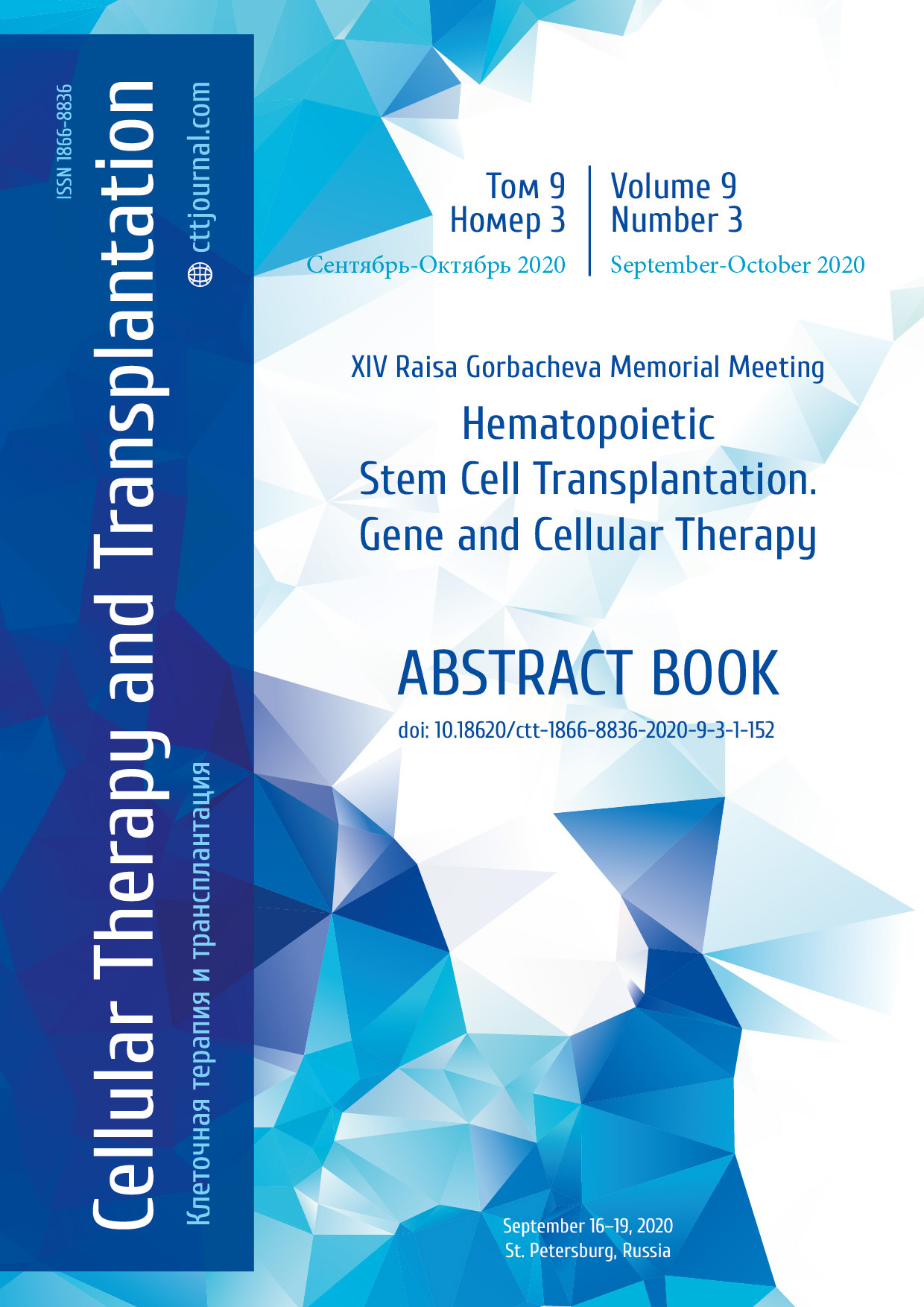IC-04. Efficiency of platelet concentrate transfusions in patients after allogeneic hematopoietic stem cell transplantation with concomitant refractoriness
Denis V. Kamelskikh, Mikhail Yu. Drokov, Igor V. Dubinkin, Olga S. Kalmykova, Vera A. Vasilyeva, Elena S. Demidova, Nikolay M. Kapranov, Julia O. Davydova, Ksenia A. Nikiforova, Maxim A. Telyashov, Artur V. Bulgakov, Irina V. Galtseva, Tatiana V. Gaponova, Larisa A. Kuzmina, Elena N. Parovichnikova, Valery G. Savchenko
National Research Center for Hematology, Moscow, Russia
Contact: Dr. Denis V. Kamelskikh, e-mail: kamelskih@yandex.ru
Summary
Introduction
Today, the patients at various stages of allogeneic hematopoietic stem cell transplantation may be classified as persons with “increased transfusion load”. According to the data of the National Research Center for Hematology (Moscow, Russian Federation), during pre-transplant period, each patient receives an average of 21.8 (0-62) transfusions of platelet concentrates; from the moment of transplantation to appearance of complete donor chimerism, the patients are subjected to 12.6 (0-65) transfusions, and over the period up to 1 year after allogeneic hematopoietic stem cell transplantation (allo-HSCT) they receive a mean of 28.3 (0-118) transfusions of blood components. Moreover, some of these patients develop refractoriness to platelet transfusions mostly due to alloimmunization of HLA and HPA with antigens of the platelet donor, which may negatively affect the HSCT outcomes, especially due to alloimmunization before HSCT, or in the early post-transplant period. One of the ways to overcome refractoriness to platelet transfusions is the individual selection of compatible donor-recipient pairs using platelet adhesion on the solid-phase. The aim of our work was to evaluate the effectiveness of platelet concentrate transfusions using an individual selection of compatible donor-recipient pairs by means of solid-phase platelet adhesion in the patients after allo-HSCT.
Materials and methods
Retrospective study of the effectiveness of 150 transfusions of platelet concentrates was carried out in 13 patients after allo-HSCT with diagnoses: MDS – 1, ALL – 3, AML – 9. Among the patients there were 9 females and 4 males, the median age was 40 (23-60) years. All patients had signs of refractoriness to transfusions of platelet concentrates, according to generally accepted criteria: two consecutive ineffective transfusions of platelet concentrates that meet the standards of procurement and storage, with a corrected count increment (CCI) after 24 hours (CCI24) less than 5 refractoriness corrected increments (RCI). In all cases, an individual selection of matching donor-recipient pairs was applied using the solid-phase platelet adhesion method (Capture-P, Immucor, USA). The generally acceptance criterion are used as a criterion for evaluating the effectiveness of transfusion: CCI24> 5RCI.
Results
According to the results of the study, only 17.3% of transfusions can be regarded as “effective” (Fig. 1), the median CCI was -0.785 (-34.42 ... 31.5) RCI.

Figure 1. Efficiency of platelet concentrate transfusions in patients after allo-HSCT
Conclusions
The study showed that the method of platelet adhesion on the solid-phase does not satisfy the need for individual selection of platelet concentrates, which requires the search for alternative ways of solving the problem of refractoriness to transfusions in patients with allo-HSCT.
Keywords
Donor, recipient, individual selection of the platelet concentrate, alloimmunization, hematopoietic stem cells transplantation.


